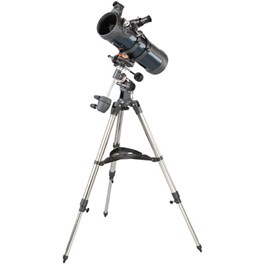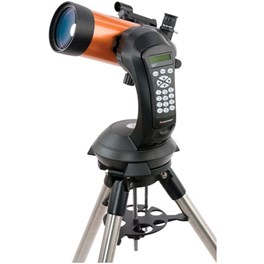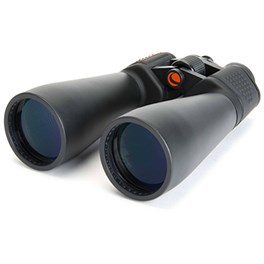
Spotting the planets is a fun and rewarding night-sky observing activity. Though at first glance they appear to hide among our stars, the planets are actually very distinctive, and with a few tools at your disposal, you can equip yourself with everything you need to spot them. Though it’s also possible to see several of the planets with the naked eye, as long as you know what you’re looking for.
In this guide, we’re running through a few tips, tricks and resources that will help you become a seasoned planet-spotter in no time.
Planet spotting techniques
Stars twinkle; planets don’t. This is generally a decent rule of thumb for getting started with planet-spotting, and it’s due to the fact that planets are much closer to us in celestial terms. However, there are a few more techniques you can employ to increase your chances of successful planet-spotting.
Finding the ecliptic
The key thing to do when spotting planets is to find the ecliptic. The ecliptic is the line that the sun takes throughout the sky (or appears to take – yes, we know the sun doesn’t actually move). As the planets orbit the sun, they will follow the ecliptic and never stray too far from it.
To find the ecliptic, use the daylight hours. Stand in the spot where you intend to go planet-spotting at night, and note where the sun is at different times of day – which distant landmarks it crosses, the path it takes through the sky. Make notes if it helps. When night comes, if there are any planets to be found, they will be found roughly along this line.
Planet characteristics

Each of the planets has its own distinctive characteristics, and knowing these can make it a little easier to know you’re looking at the right spot in the sky. We’ll run through a few quick basics for each planet so you know what to look for…
Mercury: As Mercury is closest to the sun, it tends to only be visible around sunrise and sunset. It’s small, fast and easily missed, often hanging around at low altitudes. Mercury is yellowy-white in colour – if you see a small white spot around the twilight hours, it could well be the solar system’s first planet.
Venus: The second planet is a much brighter white than Mercury – once you know what you’re looking for, it’s actually quite distinctive. Like Mercury, it also appears to stay close to the sun.
Mars: Mars is famously a rusty-red colour, and in the right conditions can be quite easy to spot. It’s closer at some times of year than others, so it’s worth checking with your preferred astronomical resources how easy it will be to spot.
Jupiter: Jupiter can be one of the brightest objects in the night sky, and using a telescope or even binoculars can be enough to pick out the cloud bands across its surface and some of its moons such as Ganymede and Io. With a more powerful telescope, you can even see Jupiter’s famous bright red spot.
Saturn: Saturn doesn’t tend to be as bright as Jupiter — something of a given as it is quite a bit further away. However, a telescope with a magnification factor of 50-100 or more is enough to see the planet’s famous rings.
Uranus: Sometimes, when conditions are excellent and everything aligns just right, it is possible to see Uranus with the naked eye. At all other times, you’ll need a telescope.
Neptune: Neptune isn’t bright enough to be seen with the naked eye – you need binoculars at the very least, and ideally a telescope, as well as detailed information on where to look and what you’re looking for – this is where the apps and resources mentioned above can come in handy. It’s still a challenge though – even with powerful magnification at your disposal, Neptune won’t look like much more than a small disc.
Best planet-spotting resources
Before you rush outside to crane your neck skywards, it’s worth taking a moment to plan in order to maximise your chances of spotting planets. Here are some resources that can be hugely useful in helping you make sense of the night sky.
Planet-spotting websites
There are a number of handy websites that are worth bookmarking to help you figure out which planets to see and when.
- timeanddate.com is a great way to see at a glance which planets will be visible in your area on a particular night, and what rough times you can expect them to appear.
- Stellarium Web gives you a navigable 360-degree look at the sky in your area, clearly marking out the planets.
- skyandtelescope.org provides weekly breakdowns of what’s likely to be visible in the night sky.
Planet-spotting apps
Your phone can be a hugely useful resource on your planet-spotting adventures — as long as you kit it out correctly. Here are the apps we’d recommend downloading.
- Android users can take advantage of the free Sky Map app. This effectively puts a planetarium in your pocket, allowing you to orient yourself towards planets, constellations or any other sky minutiae in real-time.
- iOS users might want to check out SkySafari, an app that can use AR (augmented reality) to overlay the night sky where you’re standing, allowing you to know where the planets are no matter what the conditions are like outside.
- Star Walk 2 is available for both iOS and Android, providing an instant and navigable readout of the objects visible in the night sky at your location, including planets. It also makes it easy to determine the best time to see them.
Best equipment for spotting planets
While it’s perfectly possible to see at least some of the planets with the naked eye, you’ll have a much more interesting time if you use some of the best stargazing equipment available right now. Here we’ve compiled a quick list of ideas to get you started.
Best for beginners:
Celestron makes some of the best telescopes in the business, and the Astromaster 114EQ Reflector is an ideal starter kit for someone taking their first steps in planet-spotting. It’s designed to be quick and easy to set up, with no tools required, and its 1.25-inch steel tube legs provide a secure and stable mount from which to conduct your planet-spotting.
With a powerful magnification factor, it can bring extremely distant objects into sharp relief, while the German Equatorial mount with setting circles provides a useful way to track sky-bound objects– including planets (Celestron has a useful guide to using setting circles here)
Best advanced telescope:
A more sophisticated telescope for the more serious user, the Celestron NexStar 4SE Computerised Telescope utilises a fully computerised operating system in order to be able to track celestial objects automatically.
The SkyAlign technology makes the telescope simple to set up, allowing you to get started tracking the planets in no time. The optics are treated with StarBright XLT high transmission coatings for a clear image, and on board is the “SkyX - First Light Edition” software, which includes a database of more than 10,000 celestial objects.
Best kids telescope:
If you’re introducing little ones to planet-spotting, then an affordable and user-friendly telescope like the Acuter Maksy-60 Educational Telescope Discovery Set is a great way to go. The removable discovery panel allows you to get an up-close look at how the telescope actually works, and it even has a smartphone adapter for keeping digital records of your observations.
Best Binoculars
And finally, for a more portable planet-spotting solution, don’t count out the humble binoculars. Given that many planets can be seen with the naked eye if you’re in the right place at the right time, a good pair of binoculars can be a great asset in planet-spotting. The Celestron SkyMaster 15x70 Binoculars are an excellent pair, designed to offer significant magnification and a beautifully clear image.
Lightweight but durable, and packaged with their own carry-case, the Celestron SkyMaster 15x70 Binoculars are a fantastic take-everywhere choice for those fleeting planet-spotting moments.
FAQs
What is a planet?
A planet is a large celestial body that orbits a star, like the Sun. Planets do not produce their own light but reflect the light of their star. They are spherical in shape due to their own gravity and have cleared their orbit of other debris.
How many planets are there in the Solar System?
There are eight recognised planets in the Solar System. They are, in order from the Sun: Mercury, Venus, Earth, Mars, Jupiter, Saturn, Uranus, and Neptune. Pluto, once considered the ninth planet, is now classified as a dwarf planet.
What is the biggest planet in our Solar System?
Jupiter is the largest planet in our Solar System. It is a gas giant and has a diameter of more than 11 times that of Earth, with a mass that is over 300 times greater.
Which planet is closest to Earth?
The planet closest to Earth is Venus, though Mars is often highlighted due to its exploration potential. The distance between planets changes as they orbit the Sun, so at certain times, Mercury can be closest to Earth.
Why is Pluto no longer considered a planet?
Pluto was reclassified as a dwarf planet in 2006 because it does not meet all the criteria for a planet. Specifically, it has not cleared its orbit of other debris, one of the requirements defined by the International Astronomical Union.
About the Author
Jon Stapley is a London-based freelance writer and journalist who covers photography, art and technology. When not writing about cameras, Jon is a keen photographer who captures the world using his Olympus XA2. His creativity extends to works of fiction and other creative writing, all of which can be found on his website www.jonstapley.com










